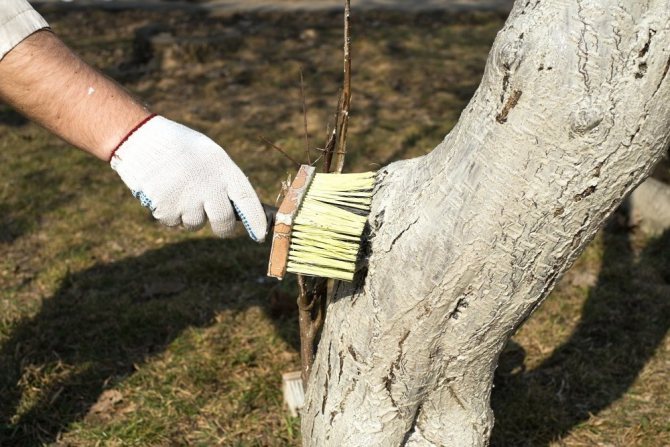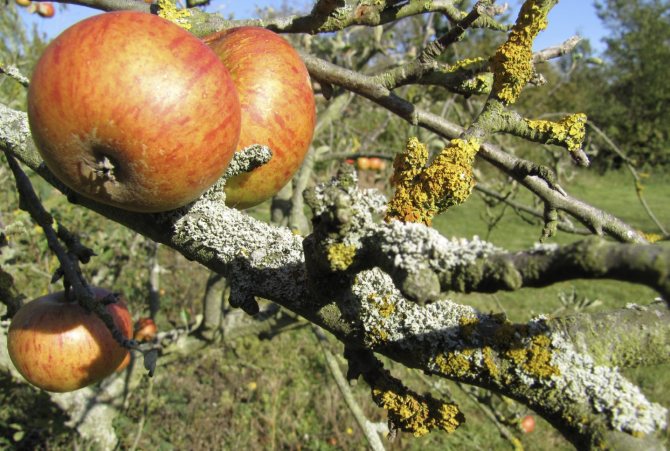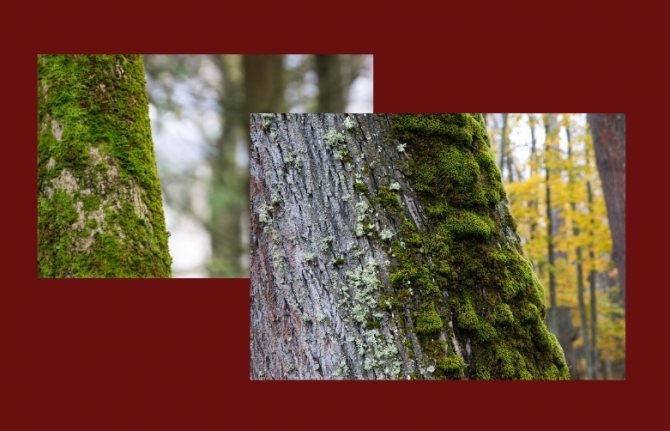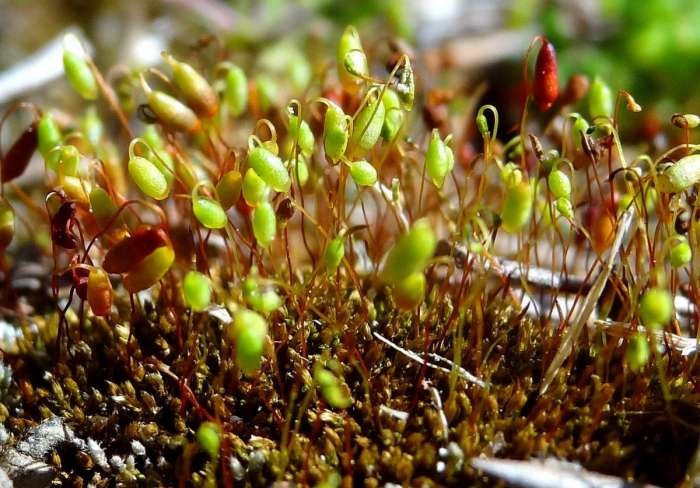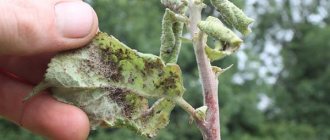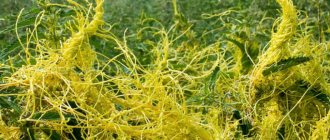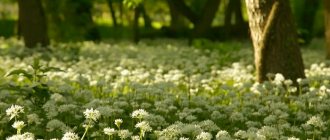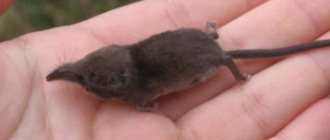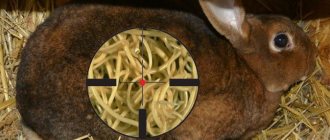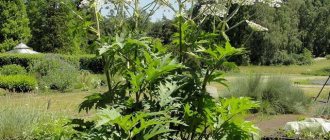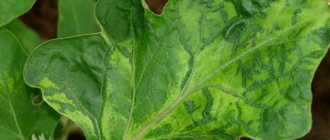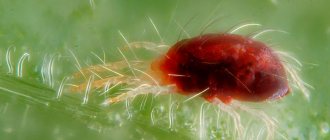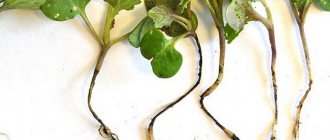Everyone remembers well from the lessons at school that the moss on the trees grows from the north side, and this is a reliable landmark for determining the cardinal points in the forest, if you suddenly get lost. True, this is not entirely true. Moss on a tree can grow from any side, it just grows more from the north, as there is more moisture and less sun. But this is in the forest. But what if moss grows on trees in our garden? This is where we won't get lost, and we don't really need landmarks. Is there any benefit from such a neighborhood, or does it only harm our pets? Let's try to figure it out.
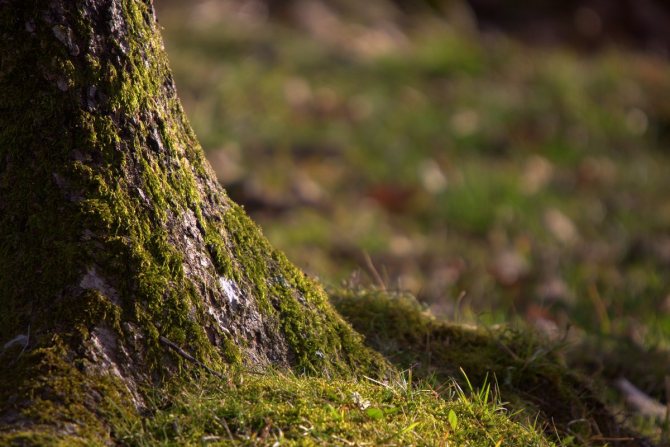
Moss on trees - benefits, harms, methods of prevention and control
What is a lichen?
Before we can figure out the methods of dealing with lichen, it will be useful to consider this neoplasm, and what it is.
So, lichen can be called a tandem of fungus and algae, which have a beneficial effect on each other, sharing moisture and beneficial salts. As a rule, many people mistakenly believe that a lichen has its own root system.
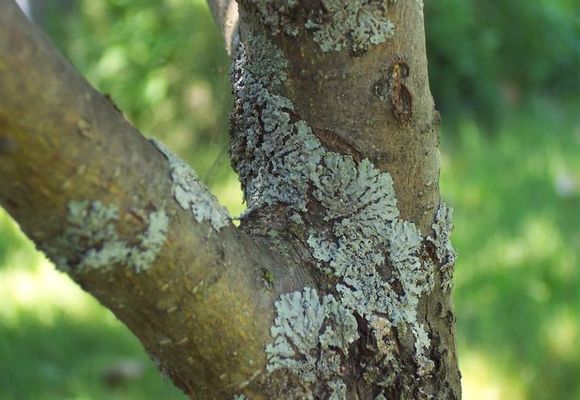

In fact, this is not the case. Moreover, the lichen does not suck moisture from the culture; the tree is necessary for this neoplasm only as a support.
Important! Lichen may differ in its external features. On apple trees, bushy, crusty or scaly ones are most often found. Therefore, the methods of struggle must be appropriate.
It is worth noting that more than 25 varieties of lichen are known today. They have an individual color, while all species need regular air and light, and the absence of such provokes the death of the lichen.
How to detect
The first indicator that a lichen growth has appeared on the bark of an apple tree is a light bloom, often of a greenish color.
The shade is provided by unicellular algae. After a short time, a fungus appears on them, provoking damage to the wood surface.
Unlike moss, lichen has a less developed fleecy structure.
With high humidity, especially in autumn in rainy weather, the signs become more pronounced because spots acquire a rich contrast.
Reproduction of the colony begins from the shady side, because the ideal conditions for the development of algae with the subsequent appearance of the fungus are dampness without the sun.
What harm can lichen cause?
If you find a lichen on the trunk of an apple tree, you must immediately start processing the garden. Why? The thing is, the trunk of any culture is covered with the so-called lentils, with the help of which the tree fully breathes.


And if a neoplasm in the form of a lichen begins to grow actively, naturally, the small chambers for obtaining oxygen overlap, as a result, normal gas exchange stops, which can lead to the death of the apple tree in the future.
In addition to the above, quite often parasites pests settle under the lichen in whole colonies. Moreover, these growths on the tree provoke the appearance of various defects.
Important! Considering that various insect parasites often settle under the lichen, try to remove it with the help of special chemicals or use improvised means.
If the apple tree is many years old, and its crown is strongly thickened, then the lichen on such a culture will feel best.Therefore, it is very important to perform regular branch thinning.
Such a neoplasm releases acids that block the full growth of the apple tree. Therefore, it is very important not to let the lichen develop further.
In general, some experienced gardeners recommend regularly examining the crop for timely detection of lichen.


The meaning of mosses
The importance of mosses in the formation and development of the Earth's biosphere can hardly be overestimated. Since prehistoric times, the ancient progenitors of modern lichens, mosses and ferns have gradually colonized the previously lifeless wastelands, creating as a result of their vital activity the soil cover necessary for other plants, and thus becoming a kind of "pioneers" in the greening of our planet.
In places of their dominant growth, bryophytes are able to cover huge areas of the earth's surface, acting as a natural refuge for animals and birds. In the tundra and permafrost regions, they are a stabilizing factor that prevents the melting of underground ice, the formation of landslides and ravines, and contributes to the preservation of the terrain.
Video: the meaning of mosses
If we talk about the meaning of bryophytes for humans, then their use is very diverse. Extracts from certain types of these plants can be used in cosmetology and medicine as tonic, antiseptic and hemostatic agents.
For residents of the Far North, far from civilization, moss is very relevant as a natural insulation for dwellings, and, say, in the taiga it can be used as dressings for medical care.
Decorative mossy species are one of the most important elements of landscape design and decoration of floristic compositions. And yet, first of all, peat is used in human life - natural deposits of dying sphagnum mosses.
Reasons for the appearance of a neoplasm
Before considering the methods of dealing with lichens, it is important to know the reasons for the appearance of this neoplasm. As a rule, there are several provocateurs of the appearance of lichens, namely:
- improper tree care;
- ignoring regular treatments;
- the wrong place for planting, which is why this defect often passes from diseased crops to healthy plants;
- lack of preventive measures;
- lack of proper treatment, as a result of which the defect spreads quickly and leads to the death of the tree.
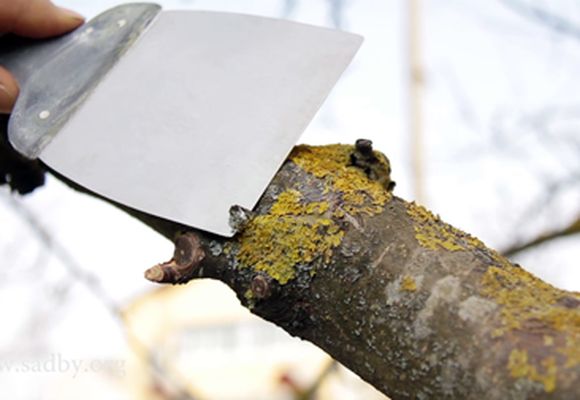

It is worth noting that the above factors can be easily eliminated if proper care of the fruit tree is organized. But, there are a number of conditions that provoke the appearance of a lichen, but they do not depend on the correct actions of the gardener, namely:
- the main vector of lichen spores is wind;
- summer season, in which neoplasm bacteria multiply with lightning speed;
- an excessive amount of sunlight can provoke deformation of the bark of the apple tree, which causes cracks in it.
Important! Correct and regular pruning of defective branches can eliminate the disease. And if you treat the culture with copper or iron sulfate, then there will be no trace of the lichen.
In general, there are many reasons why the neoplasm under consideration appears. But at the same time, the essence boils down to one thing: it is the weakened immunity of the culture that provokes lichen attacks.
Varieties and their features
In total, there are up to 30 thousand symbiotic interactions. The shade of the growth directly depends on the variety of protozoa with which the fungus enters into symbiosis.
Xanthoria
It has a yellow color with a golden tint, therefore it is called in another way a goldfish. Differs in slow development, adding in size no more than 1-2 mm per year.
Scale
Outwardly it looks like a crust, therefore they are also called crusty.They can take root not only on the apple tree trunk, but also on the ground. The color is light or dark brown.
Bushy
Formed by multiple branches of a flattened or round shape, collected in a single bunch. Lives not only on living tree bark, but also on dead remains. Some are able to settle on the soil.
Sheet
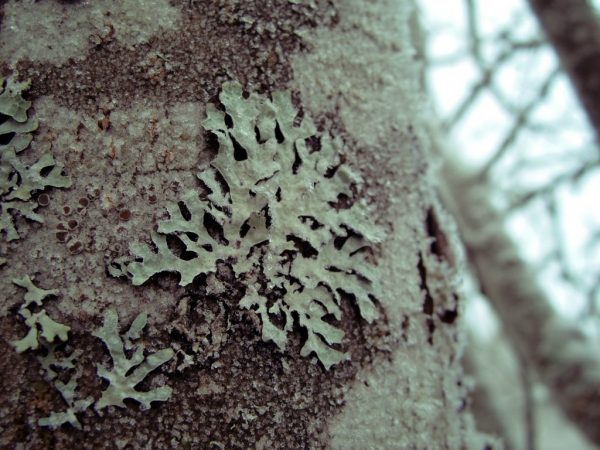

Leafy lichen is green
Another name is lamellar.
The variety often grows in width. The color is predominantly green or green-yellow.
Common signs of a defect
How to identify and fix the problem in a timely manner? In this case, the following signs will help you, indicating that an urgent need to select treatment options:
- the formation of cracks in the bark;
- change in the appearance and color of the bark;
- the appearance of hollows;
- exfoliation of fragments of the bark;
- the appearance of small neoplasms on the stem;
- drying of branches.
Important! The apple tree needs proper pruning and crown shaping. Well, in the case when the culture is completely affected by lichen, then, unfortunately, you will have to get rid of the tree by cutting it down.
Last but not least, if the trunk of a tree has split into pieces or you find a rift, this also signals a disease of the culture.
Why does moss grow on the trees from the north side?
Many will ask: why? There is only one answer - it is so necessary for him, as nature intended. Which side the moss grows on the trees is determined by the sun. The moon and the sun have a great impact on the Earth and all organisms living on it. Leeches and crocodiles, algae and monkeys, even humans, are subject to the forces that come from the sun and moon affect life. This plant is no exception. It loves moisture very much. Without it, in dry areas, the moss will not grow. And the sun also loves moisture. Under the influence of its rays, the water evaporates, forming clouds, but, taking this water from the plant, it threatens that the moss will simply die. It's sad. Therefore, the moss has learned to hide from the sun, not to give it its moisture. The earth, rotating under the rays of the sun, always protects its closed northern side from its rays. Therefore, those trees that grow separately from the forest, from the north side, are never illuminated by the sun's rays. So remove the empty smartphone and be guided by which side the moss grows on the trees.
Read also: How to paint a stucco with gold
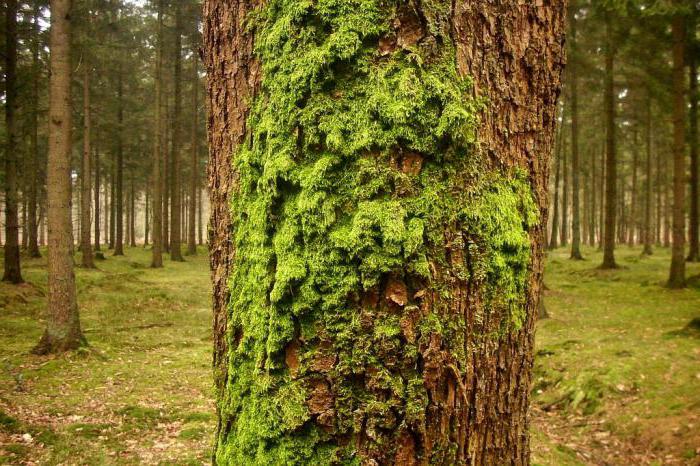

Control methods
How to remove lichen on an apple tree? Today there are many different methods of dealing with lichen, such as:
- getting rid of the build-up in a physical way;
- the use of chemicals;
- use of whitewash.
Important! If you find whitish or yellowish spots on the tree, do not rush to immediately take drastic measures. If the build-up does not increase, you can leave it alone, but when you find that it is spreading, you should immediately take action.
Each of the above methods is used in a specific case. Therefore, let's take a closer look at them.


The meaning of mosses
Mosses in their natural environment are pioneers, they are the first to inhabit territories, the climatic conditions of which sometimes do not suit any other plant. These plants are an integral part of the entire biosphere. Mosses create special biocenoses in the tundra, covering the ground with a solid carpet.
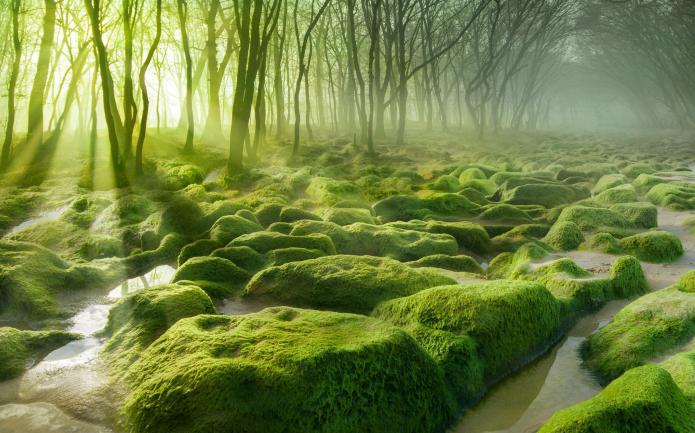

They have a very pronounced ability to retain moisture, the benefits of which can be interpreted from two sides. From the first point of view, they regulate the water balance in the soil, and from the second point of view, they contribute to waterlogging of forests, meadows and agricultural lands.
Sphagnum mosses are a valuable source of peat deposits, which are widely used as fuel, construction material and in agriculture. In addition, some species are used in medicine as they have antibacterial properties.But the formation of sphagnum and hypnum bogs is essential for the entire ecosystem as a whole. It is home to many game animals and birds and is home to many shrubs and herbaceous plants. But most importantly, the swamp is a kind of storage reservoir for fresh water. After all, like a sponge, absorbing all the sediments, it gradually then gives moisture to the soil to small streams that flow out of it. The swamp plays the role of a moisture regulator in the surrounding area.
When flowering plants did not yet exist in nature, it was already pleasing to the eye ... of dinosaurs. Mosses and their habitats The moss-covered forest reminds us of primitive times. Its layer of only a few centimeters creates the impression of a dense green carpet that covers everything around.
Getting rid of growths by the physical method
You can peel the apple tree yourself. With this method of struggle, you will need the following available tools:
- wooden scraper;
- film;
- a ready-made solution of ferrous sulfate.


Having prepared all the means, they begin to cleanse the tree. To do this, perform actions in a specific order, namely:
- with the onset of spring, they go to the garden to destroy the growth;
- first, a film or burlap is spread under the culture;
- further, begin to scrape off the wet growth, thus, until the grower sees a healthy layer of wood.
After that, all cleaned places can be processed using iron vitriol 300, but if it was not at hand, clay will do.
It is worth noting that if the bark of the tree has been heavily peeled and the wood has been injured, take crushed activated carbon and coat all the damaged areas.
The use of chemicals
Perhaps it will be superfluous to describe all the tools developed specifically to combat lichen, so we will describe only the most effective ones. These include the following:
- inkstone;
- Skor preparation for the destruction of this type of fungus, which has the same effect as vitriol;
- lime milk.
Important! If you cannot completely rid the tree of lichen, then use the drug Skor, which is bred strictly according to the instructions and is sprayed in the spring in the phase of dormant buds.
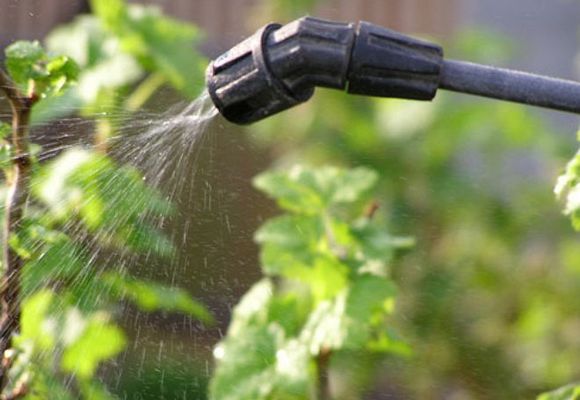

It is advisable to use all of the above funds in the spring. As a rule, after the first treatment, the build-up disappears literally in a week.
In the event that the defect has not completely disappeared, it is recommended to re-process. And do not forget, if you allow the crown to thicken too much, there will be no good harvest in the future. And the culture itself will become weaker.
Other diseases of the cortex
Scab
Many gardeners have encountered brown spots that suddenly appeared on apple fruits, foliage and young shoots. All this is characteristic of scab - a rather dangerous disease of fruit trees, which is caused by a fungus.
And the fungus year after year is able to winter in fallen infected foliage, each time throwing spores into the air in the spring, when damp weather sets in the street.


This disease spreads en masse in June-July after heavy rains. At first, the fungus on the tree appears as translucent, as if from oil, spots on the foliage. Gradually, they turn gray and are covered with a brown bloom. The leaves dry up and fall off.
Other signs of scab are gray and black spots on apples, cracking of the fruit that stops pouring. Also, apples are deformed with early infection by a fungal infection. They are deformed, made one-sided.
Young ovaries often crumble. Apple orchards are more susceptible to scab infestation than others. Usually, trees are planted too densely here or weakened old apple trees are preserved.
Fungus, black cancer
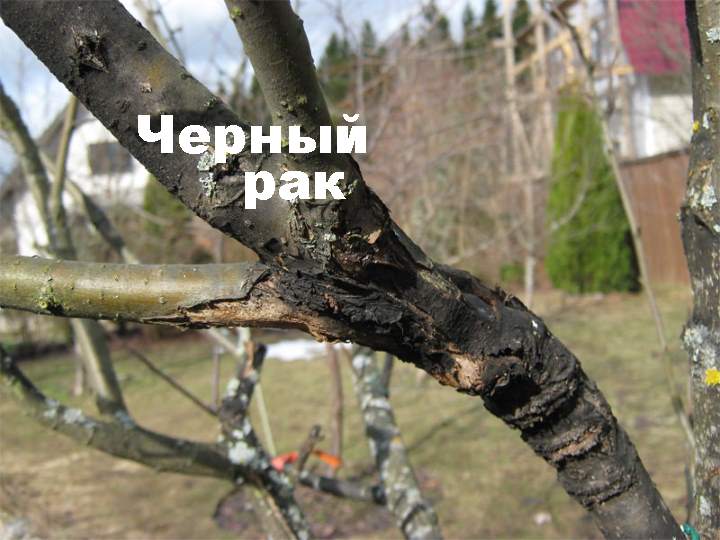

To save the planting from primary infection with fungal spores, on spring days, before the leaves appear, it is necessary to spray the soil and trees with pesticides.
Should be used:
- copper sulfate,
- nitrafen, which is diluted at the rate of 300 grams per bucket of water,
- or 1% DNOC.
At the end of April, trees need to be treated with Bordeaux liquid (3-4%), copper chloride or cuproxate.
During the formation of buds, as well as after flowering, use a less concentrated Bordeaux liquid (1%).
How is scab on an apple tree treated in summer? 3-5 weeks after flowering, the trees are sprayed with suspensions cineba, captana, phthalana.
To prevent infestation of apple trees next year, it is necessary to remove fallen leaves as soon as leaf fall ends, and plow the soil under the trees.
Powdery mildew
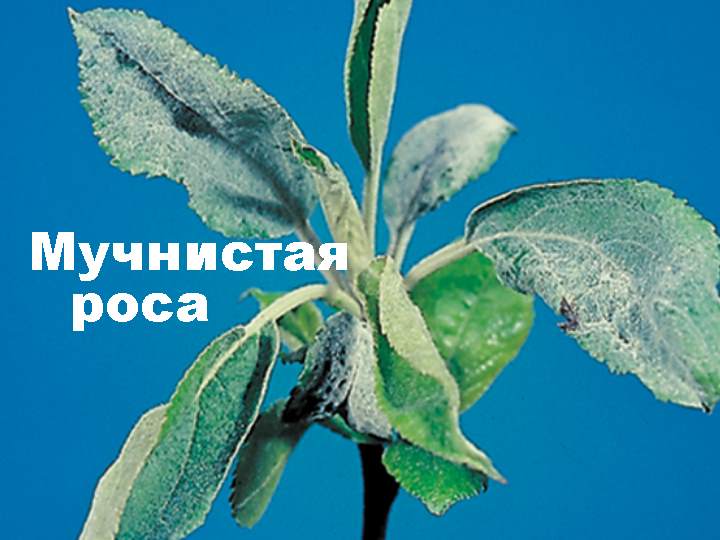

Speaking about pests of apple trees and treatment, powdery mildew should also be mentioned.
After long rains on the newly blossoming leaves and inflorescences of apple trees, a silvery bloom may appear on young shoots.
This is a sign of powdery mildew damage to trees. Its appearance is provoked by a fungus that hibernates in the buds of infected shoots and actively develops with the arrival of summer in dry weather.
The danger of powdery mildew is that it can dry out the foliage and inflorescences of apple trees, the shoots can stop growing, and the ovaries can crumble.
Treatment


From early spring and throughout the growing season, it is necessary to cut off apple shoots infected with the fungus.
When the tree fades, it needs to be sprayed with the preparation "Hom».
After harvesting, the apple tree is treated with iron or copper sulfate.
Instead of these funds, you can use 1% Bordeaux liquid.
After collecting the foliage that has fallen after processing, it is burned.
Using whitewash
Whitewashing is perhaps one of the most versatile and affordable treatments for lichen on an apple tree. It is advisable to whitewash the trees in autumn, because it is during this period that the growth is most active and develops. Well, with the onset of spring, repeat this procedure.
In such conditions, all growths will not be able to last long on the tree. And to keep the slaked lime solution as long as possible, add a little milk to it. Getting rid of lichen in this way always brings good results.
If the build-up has formed on the bark in small groups, it can be excised along with the bark. Only in this case, after carrying out this procedure, you will need to carefully cover all the cut points with clay. After such manipulation, the layer will gradually be completely restored.
Separately, it is worth highlighting expert advice on how to deal with this neoplasm. As a rule, if your fruit garden is in a state of desolation, then first you will need to cut down and excise those branches that create excessive thickening. And only then apply all the above methods of treatment.


Mosses are one of the oldest plants on Earth
The Mossy Division unites a large group of higher plants, which numbers about 25,000 species. Of these, only 1,500 species grow on the territory of our country. The estimates are approximate, since very large areas of tropical forests have not yet been explored. There is even a separate science that studies mosses - bryology. The oldest fossil forms date back to the Carboniferous, but scientists admit that they appeared even earlier. These are the only plants whose evolution is associated with the regressive development of the sporophyte. At the dawn of the development of life on Earth, they firmly took their place in the plant world and retain it to this day.
Twenty-two species from the Mossy section are listed in the Red Book of Russia: Krylov's Campilium, Orchidium Orchidium, Brioxifium Savatye, Ongstremia herringbaceous, Atraktylokarpus Alpine, Marcius Oreus, Indziella Tien Shanshanskaya, Krylovy Krylovy Lindubergia, Dose-Winged Lindberghia smooth-toothed gomaliadelphus, northern necker, dumb plagiotetium, alternating taxiphyllum, Hooker's actinothuidium, southern alpine leptoptteryginandrum, wrapped hyophila, alaskan fossombronia, Japanese nardia, discolored isopaches.
The best means of prevention
Nothing protects a culture better than regular maintenance and treatment.Moreover, correctly performing all the manipulations, you will not face such a problem as the appearance of growths and the treatment of lichen on an apple tree. So, what needs to be done to prevent fungal defects:
- Treat your garden regularly for pests and defects.
- Lubricate all cracks in the bark with a clay mash or garden varnish.
- With the onset of spring, even before the buds bloom, spray the trees with a solution of ferrous sulfate 10.
- Take time each year to trim the garden, whitewash, and properly form the crown.
- Apply top dressing and loosen the soil.
- Do not forget that whitewashing the apple tree is the best option in preventing the appearance of lichen and other trunk diseases.
- Use only clean tools that have been pretreated with alcohol to work in the front garden. In this case, the fungi will not be able to spread through the tree.
Well, so we looked at how to get rid of lichen on an apple tree. It should be noted that the most correct thing would be to regularly carry out the simplest preventive measures that will help preserve your garden and please you with a large and generous harvest.
And it's also worth remembering what seasoned gardeners say about fruit trees, there is only one advice in this case: pay more attention to the garden, and you will get a great return in the form of sweet apples.
183
Can moss interfere with tree development?
Now let's consider the potential harm from the appearance of such a guest in our garden. Mosses are tiny perennials up to 50 mm long. They have no flowers, and instead of roots, they have root hairs (rhizoids). Rhizoids are one elongated cell or several cells growing in a row. They serve to attach the plant to the base surface and absorb moisture.
Directly on the body of the moss, a sporophyte grows - a thin leg, at the end of which a box is formed - a sporangium, inside this box a large number of spores mature.
Mosses reproduce by spores, therefore, appearing on one tree, they rather quickly move by wind, rain, insects to neighboring ones, which, first of all, violates the aesthetic beauty of the garden and gives it an unkempt look.
Moss spreads along the bark of the tree in a continuous thick carpet, which prevents free access of air and moisture to the surface of the trunk and branches. This slows down the development of the tree and reduces its fertility.
In addition, the accumulation of moss is an excellent shelter for various pests, larvae, bacteria and spores of already parasitic plants. Therefore, it is better to avoid the appearance of moss on your trees.
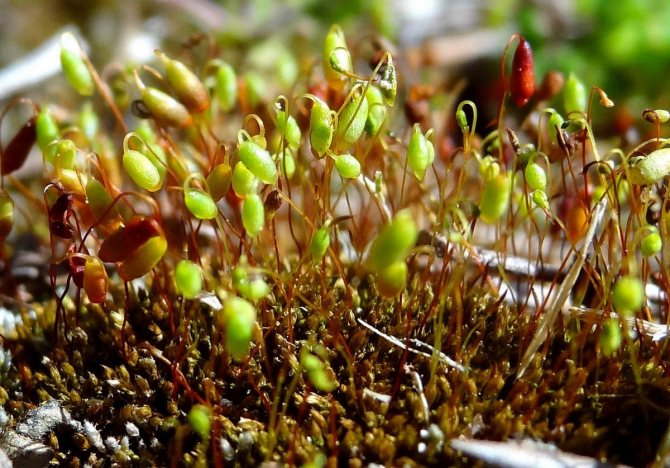

Directly on the body of the moss, a sporophyte grows - a thin leg, at the end of which a box is formed - a sporangium, where spores ripen.


